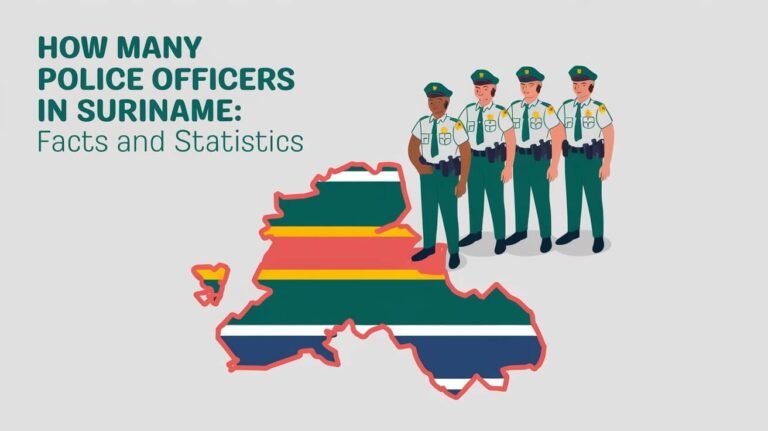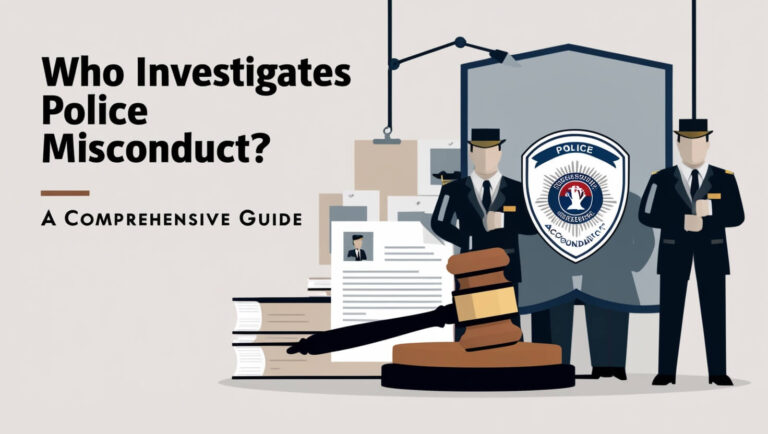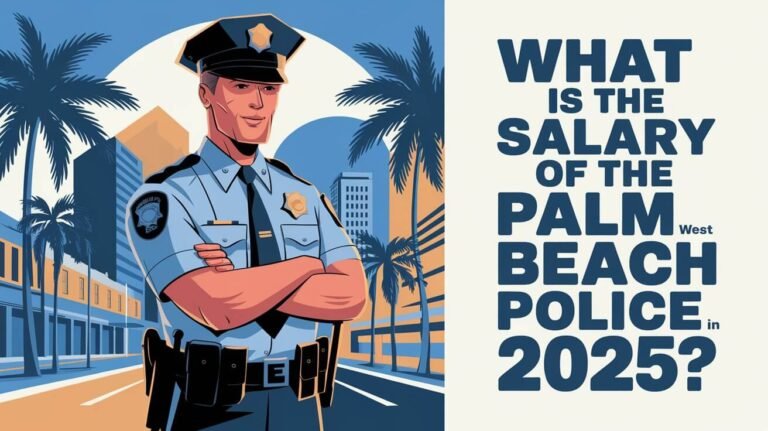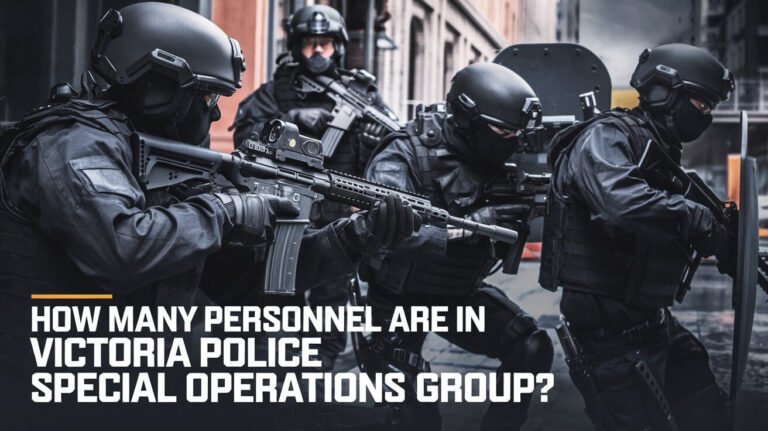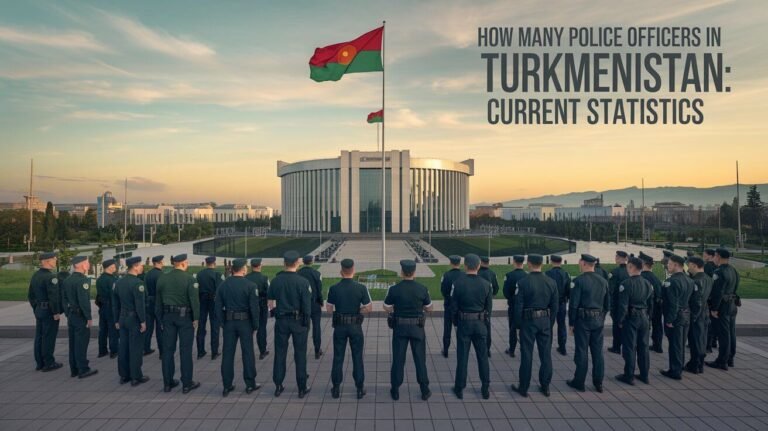How Many Police Officers In Salvador: Current Numbers In 2025
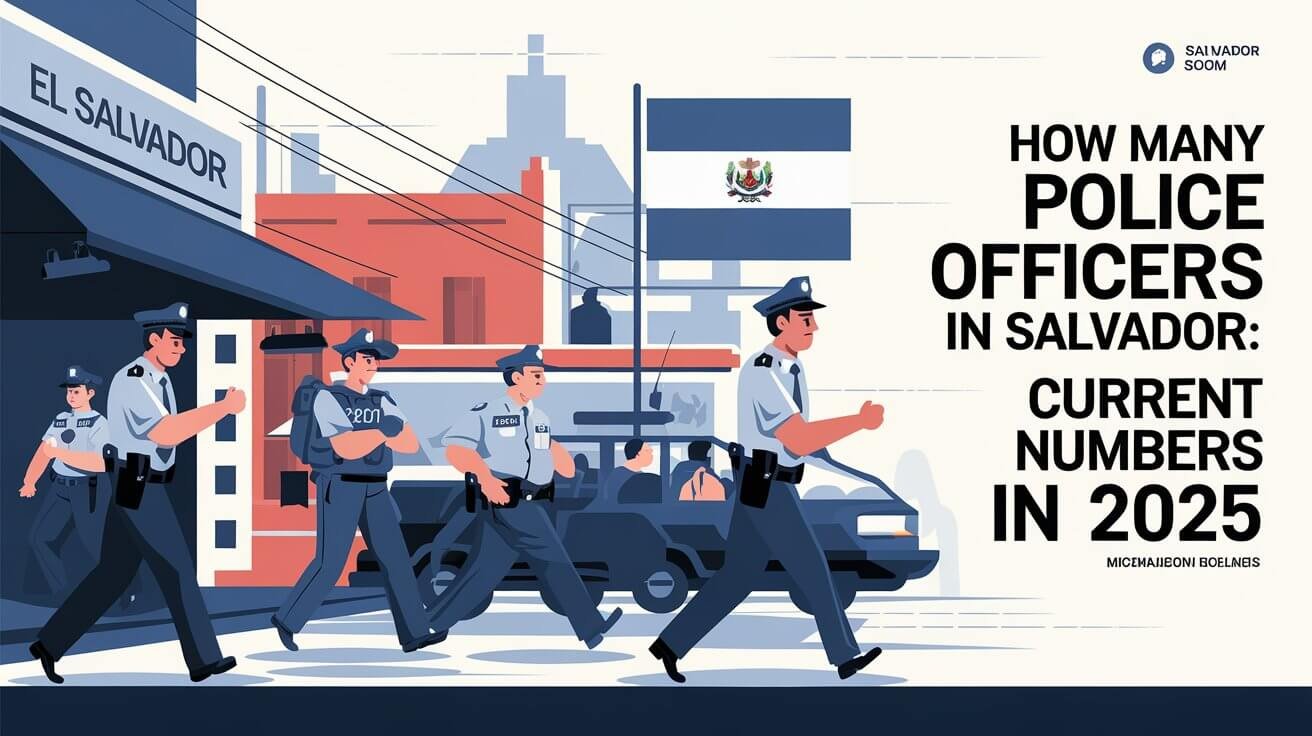
The National Civil Police of El Salvador has about 34,000 employees. This number shows how big the law enforcement team is in the country. They work hard to keep everyone safe and fight crime.
The police face big challenges, like a recent state of emergency. Over 33,000 people were arrested. The police in El Salvador get help from other countries, like the U.S. They received about $67.9 million in 2016. Knowing how the police work helps us see if they are doing a good job.
Current Police Force Numbers in Salvador
Law enforcement in El Salvador is key to fighting crime and violence. The police force has seen a big drop in homicides, down 52 percent from 2015. Yet, El Salvador’s murder rate is among the highest globally, at 50 per 100,000 in 2018.
The National Civil Police of El Salvador keeps the peace. It’s divided into branches like military police, civil police, and municipal guard. Each plays a vital role in tackling crime and violence.
Police Force Structure
The police force in El Salvador is set up to serve the community well. It has several key parts:
- Military police: keeps public order and security
- Civil police: investigates crimes and keeps law and order
- Municipal guard: supports community security
These groups work together to offer strong law enforcement. Understanding the police force is key to fighting crime and violence in El Salvador.
Salvador Police Demographics
The police demographics in Salvador are key to understanding law enforcement diversity. El Salvador has over 25,000 police and 20,000 military officers. This means one security officer for every 100 people, helping keep the peace.
Police in Salvador aim to have more diverse officers. They are getting training to be more sensitive to gender issues. From 2001 to 2003, some officers received this training, showing a push for equality.
Some important facts about Salvador’s police include:
- Over 25,000 police officers and 20,000 military officers are deployed in public security missions.
- A ratio of one security officer per 100 inhabitants.
- Efforts are being made to provide gender sensitivity training to police officers.
- A significant number of complaints have been reported regarding police misconduct, including maltreatment, disproportionate use of force, and cruel treatment.
These figures show the need for more diversity in Salvador’s police. Knowing the demographics helps find ways to improve. This leads to a more inclusive and effective law enforcement system.
Police Distribution Across Salvador Districts
The police in Salvador work hard to keep the city safe. Crime rates have dropped a lot. In 2018, there were 51 murders for every 100,000 people. By 2021, this number fell to 17.6 per 100,000.
Police cover all areas of Salvador, including the North, South, and suburbs. The National Civil Police (PNC) has over 27,400 officers. They help keep the city safe. In 2023, Salvador had the lowest murder rate in Latin America, at 2.4 per 100,000.
North Zone Coverage
The North Zone of Salvador has a lot of police. They work to stop crime and keep the peace.
South Zone Deployment
The South Zone also has many police officers. They focus on stopping crime and keeping order. Their efforts are aimed at high-crime spots.
Suburban Areas Statistics
Crime has gone down in Salvador’s suburbs too. The police have made these areas safer. Their work has created a better environment for everyone.
Police-to-Population Ratio Analysis
The number of police officers per person in Salvador is key to understanding how well law enforcement works. The United Nations says El Salvador has a ratio between 300 and 400 officers for every 100,000 people.
In Salvador, there were 21,900 police officers for a population of 6,516,500 in 2012. This made the ratio 336 officers for every 100,000 people. This number is higher than South Africa’s but lower than Singapore’s.
Here is a comparison of police-to-population ratios in different countries:
| Country | Police-to-Population Ratio (per 100,000 inhabitants) |
|---|---|
| El Salvador | 336 |
| South Africa | 345 |
| Singapore | 200 |
The police-to-population ratio in Salvador has stayed relatively the same from 2006 to 2012. This shows that law enforcement in the city is effective.
Types of Law Enforcement Units
Law enforcement units in Salvador are key to keeping the city safe. They have different specialized units for various needs. These units work together to serve the community well.
Special Operations Teams
Special operations teams deal with dangerous situations like hostage cases and armed robberies. They have special gear and weapons, like the S&W 459, P227, and M4.
Traffic Control Units
Traffic control units keep traffic moving and enforce traffic rules. They aim to prevent accidents and reduce road congestion.
Community Policing Groups
Community policing groups build trust with the community to stop crime. They help vulnerable groups, like women and children, with support and resources.
Law enforcement in Salvador is dedicated to serving the community well. With many specialized units, the city is ready to face any situation and keep everyone safe.
| Unit | Description |
|---|---|
| Special Operations Teams | Handle high-risk situations |
| Traffic Control Units | Maintain traffic flow and enforce traffic laws |
| Community Policing Groups | Build trust and prevent crime in the community |
Budget Allocation for Salvador Police Forces
The police budget in Salvador is key to the country’s safety. It’s important to see how funds are spread out. This helps keep the public safe and fights organized crime.
Some countries spend a lot on their police. For instance, the U.S. gives $428.66 per person to its police. Costa Rica leads with a $1.5 billion police budget. El Salvador, with 6.5 million people, has 26,966 police officers.
Here are some important facts about Salvador’s police budget: * The U.S. gave $1.5 million to Salvador’s police during COVID-19. * The State Department asked for $456.8 million for law enforcement in 2022. * El Salvador’s GDP is $26.0 billion, with a GDP per capita of $3,790.
| Country | Police Budget | GDP Allocation |
|---|---|---|
| Costa Rica | $1.5 billion | 2.5% |
| United States | $428.66 per capita | 2% |
| El Salvador | Not available | Not available |
Police budget in Salvador is critical for safety and fighting crime. Though the exact amount is unknown, the country’s GDP and law enforcement funding are important to consider.
Police Infrastructure and Resources
The police in Salvador are key to keeping the city safe. They have the tools and resources needed to do their job well. This includes police stations, vehicles, and technology.
Some important parts of the police setup in Salvador are:
- Station locations: Police stations are spread out across the city to cover every area.
- Vehicle fleet size: The police have many vehicles for patrols, emergencies, and other duties.
- Technology resources: They use tech like communication systems and cameras to help them work.
Government is trying to make the police better in Salvador. They’re investing in new tech and training for officers.
| Category | Description |
|---|---|
| Police Stations | Number of police stations in Salvador: Not available |
| Vehicle Fleet | Number of police vehicles in Salvador: Not available |
| Technology Resources | Types of technology used by the police force: Communication systems, surveillance cameras |
Training Facilities and Programs
Police training in Salvador is key for law enforcement education. The International Law Enforcement Academy (ILEA) in San Salvador is a major training center. It was set up in 2005 and has trained over 791 students, including police, prosecutors, and judges.
The ILEA offers many training programs. These include:
- Law enforcement techniques
- Investigative methods
- Counter-terrorism strategies
- Community policing
These programs help police officers improve their skills. This enables them to tackle security challenges in Salvador more effectively.
The ILEA is a big investment in law enforcement education. The United States has spent over $3.6 million on it by 2007. The academy’s headquarters, costing $4 million, shows the commitment to quality training.
| ILEA Location | Year Established | Number of Graduates |
|---|---|---|
| San Salvador | 2005 | 791+ |
By giving police officers top-notch training, Salvador is boosting its law enforcement. The ILEA shows how vital investing in law enforcement education and training is for Salvador.
Crime Statistics and Police Response Times
Salvador has seen a big drop in intentional homicide rates. From 38 per 100,000 in 2019 to 7.8 in 2022. This is thanks to the police and military working hard to fight violence and organized crime.
The crime stats in Salvador show a good trend, with fewer homicides. The police response times have also gotten better. They’ve worked on emergency response data and used new ways to communicate.
By December 5, 2024, over 83,600 people linked to gangs were arrested. About 25,000+ police officers were part of the crackdown in 2023.
Key Statistics
- Number of gang members in Salvador estimated at over 120,000 as of August 2023
- Over 83,600 people accused of gang affiliations have been arrested in Salvador by December 5, 2024
- Approximately 25,000+ police officers engaged in the gang crackdown in Salvador in 2023
- Intentional homicide rates in El Salvador have decreased from 38 per 100,000 in 2019 to 7.8 in 2022
The police and military’s hard work has led to fewer crimes. The faster police response has made Salvador safer for everyone. The trend shows the authorities are winning the fight against violence and crime.
| Year | Intentional Homicide Rate | Number of Arrests |
|---|---|---|
| 2019 | 38 per 100,000 | N/A |
| 2022 | 7.8 per 100,000 | N/A |
| 2024 | N/A | Over 83,600 |
Comparative Analysis with Other Brazilian Cities
Salvador’s police force is often compared to other major cities in Brazil. An analysis shows Salvador faces unique challenges and opportunities. The number of police officers per 100,000 people in Salvador is similar to other big cities.
The way police are spread out in Salvador is interesting. This is based on crime rates. Areas with more crime get more police. Salvador’s crime rates are high, but the city is working hard to improve.
Some important numbers are:
- Brazil had 27 homicides per 100,000 people in 2015. This is more than the U.S. and Germany.
- The number of Brazilian cities among the 50 most violent in the world grew from 14 in 2011 to 19 in 2014.
- Cities like San Juan, Puerto Rico, have become safer than many U.S. cities.
These numbers show the complexity of law enforcement in Brazil. By looking at other cities, Salvador can learn how to make its community safer.
Final Words
The police in Salvador are key to keeping the city safe. Despite their efforts, the city faces many challenges. The police force in Salvador needs better training and resources to serve the community well.
The law enforcement in El Salvador must keep improving. They should use new strategies to tackle the city’s problems. This will help make the city safer for everyone.
To improve, the police need better infrastructure and more resources. Working with the community and other groups is also important. This way, the police can build trust and fight crime more effectively.
Focusing on the causes of crime and respecting human rights, the police can make Salvador a safer place. This will benefit everyone living there.
Frequent Questions
How many police officers are there in Salvador?
This section will give you the latest numbers on Salvador’s police force. You’ll learn about the military police, civil police, and municipal guard.
What are the demographics of the police force in Salvador?
We’ll explore the demographics of Salvador’s police force. You’ll find out about their age, gender, and ethnicity. We’ll also talk about efforts to increase diversity.
How are the police officers distributed across Salvador districts?
This section will show you how police officers are spread out in Salvador. You’ll see statistics for each district. We’ll discuss the challenges they face and their efforts to overcome them.
What is the police-to-population ratio in Salvador?
We’ll examine the police-to-population ratio in Salvador. This will help you understand how effective the police are. We’ll also discuss the challenges they face and their solutions.
What types of law enforcement units are there in Salvador?
Salvador has different law enforcement units. We’ll cover special operations teams, traffic control units, and community policing groups. You’ll learn about their roles and the challenges they face.
How is the budget allocated for the police forces in Salvador?
We’ll look at how the police budget is spent in Salvador. You’ll see how funds are allocated for different units and initiatives. We’ll discuss the challenges they face and their solutions.
What is the police infrastructure and resources like in Salvador?
Salvador’s police infrastructure and resources will be discussed. You’ll learn about station locations, vehicle fleets, and technology. We’ll talk about the challenges they face and their efforts to improve.
What are the training facilities and programs for police officers in Salvador?
We’ll explore the training facilities and programs for Salvador’s police officers. You’ll learn about the National Academy of Public Security. We’ll discuss the curriculum and the challenges in education and training.
What are the crime statistics and police response times in Salvador?
This section will cover crime statistics and police response times in Salvador. You’ll see data on high-crime areas and emergency response. We’ll discuss the challenges and efforts to address them.
How does the police force in Salvador compare to other Brazilian cities?
We’ll compare Salvador’s police force to other Brazilian cities. You’ll learn about crime statistics, response times, and strategies. We’ll discuss the challenges and efforts to address them.

